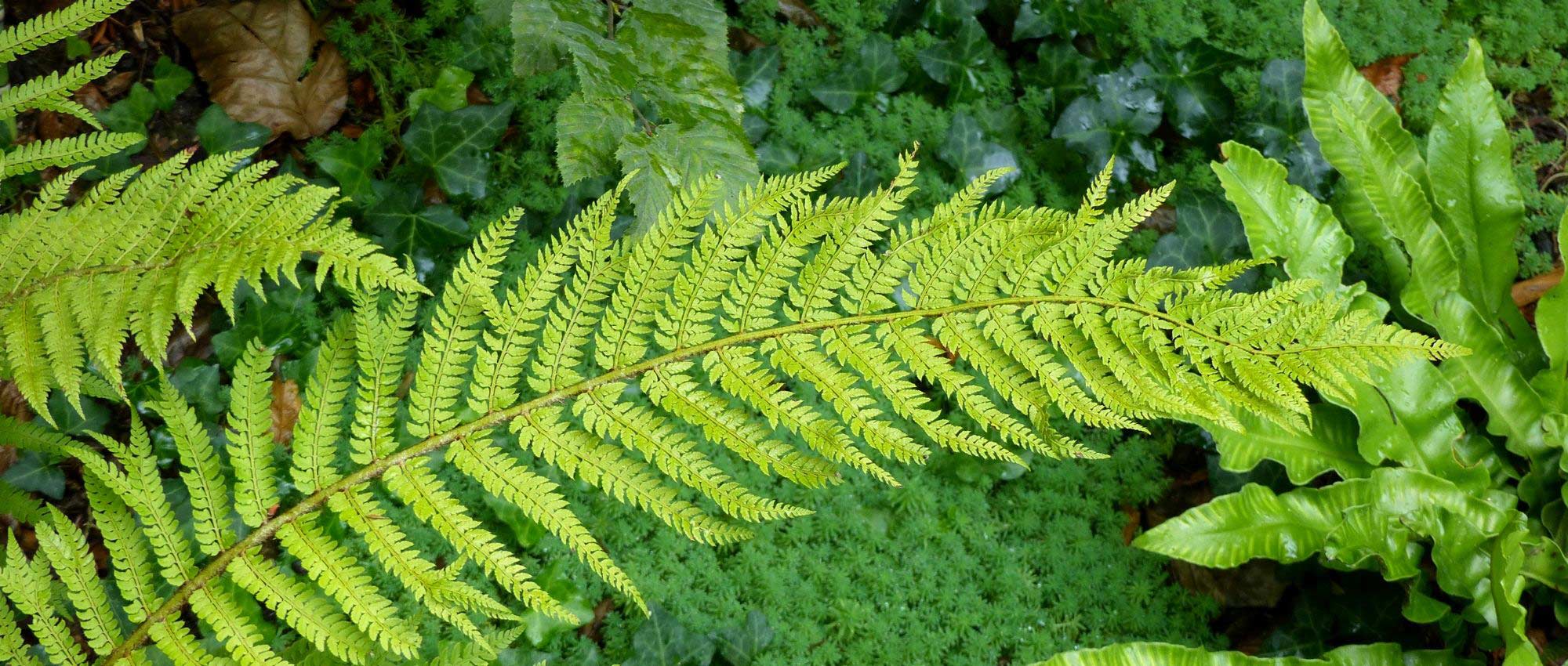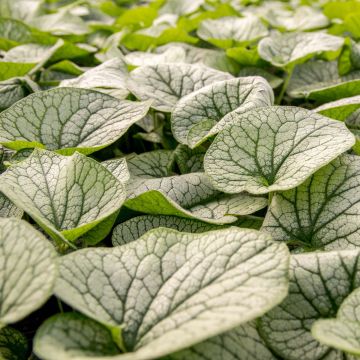

Polystichum munitum - Giant Holly Fern


Polystichum munitum - Giant Holly Fern


Polystichum munitum - Giant Holly Fern
Polystichum munitum - Giant Holly Fern
Polystichum munitum
Western Sword Fern, Sword Fern, Giant Holly Fern
This fern is regrowing healthy leaves, the previous ones turned yellow.
Isabelle, 02/11/2024
Special offer!
Receive a €20 voucher for any order over €90 (excluding delivery costs, credit notes, and plastic-free options)!
1- Add your favorite plants to your cart.
2- Once you have reached €90, confirm your order (you can even choose the delivery date!).
3- As soon as your order is shipped, you will receive an email containing your voucher code, valid for 3 months (90 days).
Your voucher is unique and can only be used once, for any order with a minimum value of €20, excluding delivery costs.
Can be combined with other current offers, non-divisible and non-refundable.
Why not try an alternative variety in stock?
View all →This plant carries a 12 months recovery warranty
More information
We guarantee the quality of our plants for a full growing cycle, and will replace at our expense any plant that fails to recover under normal climatic and planting conditions.


Would this plant suit my garden?
Set up your Plantfit profile →
Description
Polystichum munitum, which is sometimes called Sword Fern or the Giant Holly Fern, is a beautiful evergreen fern that resembles the Christmas Fern, but has a more imposing stature and a particularly strong structure that provides excellent resistance to bad weather. It produces an abundance of large, narrow fronds shaped like sword blades, which are tough and glossy and deep green in colour, appearing polished. Its upright and spreading habit is elegant, and it has a generous appearance. It thrives in cool climates and humus-rich, neutral to acidic soil, adapting to shady or even sunny conditions.
Polystichum munitum is one of the ferns endemic to the northwest of North America, where it can be found all along the Pacific Coast, from southeastern Alaska to southern California, as well as inland to the Black Hills mountains. This cool-climate species thrives abundantly in moist undergrowth and deciduous or coniferous forests, at low altitudes. It is a perennial plant of the Dryopteridaceae family, with an ascending rhizome, closely related to the male fern. Polystichum munitum forms a stipe (a kind of false trunk) reaching 1/5th of the size of each frond, covered with brown scales. This short stipe releases a dense tuft of foliage, with a fountain-like habit, from 90 cm (35 in) to 1.5 m (5 ft) in height and width. Each Polystichum plant can produce up to 50 tough sterile fronds, bearing erect fertile fronds at their tips. The lamina, linear to lanceolate in shape, is pinnate and carries 30 to 50 pairs of pinnae.
The Polystichum genus comprises a highly varied and particularly decorative group throughout the year in most species and varieties. Fully hardy, the Sword Fern adapts to many different conditions, but it seems to have a clear preference for cool climates and neutral to acidic soils, making it an ideal candidate for underplanting conifers. Just like its cousin, the Christmas Fern, its large glossy fronds can be used to create beautiful arrangements for festive tables, at a time of year when flowers are scarce. In the undergrowth, it can be associated with simple plants like butcher's broom, hollies, Oregon grape holly, or cotoneasters. On a shaded slope, it can be paired with hart's-tongue ferns or a robust and undemanding conifer like Siberian carpet cypress. In a more refined border, it can accompany, for example, fuchsias, yellow loosestrifes, and bicoloured pineapple lilies. It also thrives near water, among candelabra primroses (Primula bulleyana) or Japanese primroses (Primula japonica).
Polystichum munitum - Giant Holly Fern in pictures




Foliage
Plant habit
Botanical data
Polystichum
munitum
Dryopteridaceae
Western Sword Fern, Sword Fern, Giant Holly Fern
North America
Other Polystichum
View all →Planting and care
Polystichum munitum thrives in shady, partially shady, or even sunny locations, in a humus-rich to clayey soil that is moist but not too waterlogged, and close to a neutral pH. It particularly appreciates a humid and cool atmosphere and a fertile substrate, composed of humus, clay, and dead leaves. The old fronds of these ferns should be cut back in early spring, close to the stump, so that you can fully enjoy the extraordinary spectacle offered by the growth of new fronds every year.
Planting period
Intended location
Care
Planting & care advice
-
, onOrder confirmed
Reply from on Promesse de fleurs
Similar products
Haven't found what you were looking for?
Hardiness is the lowest winter temperature a plant can endure without suffering serious damage or even dying. However, hardiness is affected by location (a sheltered area, such as a patio), protection (winter cover) and soil type (hardiness is improved by well-drained soil).

Photo Sharing Terms & Conditions
In order to encourage gardeners to interact and share their experiences, Promesse de fleurs offers various media enabling content to be uploaded onto its Site - in particular via the ‘Photo sharing’ module.
The User agrees to refrain from:
- Posting any content that is illegal, prejudicial, insulting, racist, inciteful to hatred, revisionist, contrary to public decency, that infringes on privacy or on the privacy rights of third parties, in particular the publicity rights of persons and goods, intellectual property rights, or the right to privacy.
- Submitting content on behalf of a third party;
- Impersonate the identity of a third party and/or publish any personal information about a third party;
In general, the User undertakes to refrain from any unethical behaviour.
All Content (in particular text, comments, files, images, photos, videos, creative works, etc.), which may be subject to property or intellectual property rights, image or other private rights, shall remain the property of the User, subject to the limited rights granted by the terms of the licence granted by Promesse de fleurs as stated below. Users are at liberty to publish or not to publish such Content on the Site, notably via the ‘Photo Sharing’ facility, and accept that this Content shall be made public and freely accessible, notably on the Internet.
Users further acknowledge, undertake to have ,and guarantee that they hold all necessary rights and permissions to publish such material on the Site, in particular with regard to the legislation in force pertaining to any privacy, property, intellectual property, image, or contractual rights, or rights of any other nature. By publishing such Content on the Site, Users acknowledge accepting full liability as publishers of the Content within the meaning of the law, and grant Promesse de fleurs, free of charge, an inclusive, worldwide licence for the said Content for the entire duration of its publication, including all reproduction, representation, up/downloading, displaying, performing, transmission, and storage rights.
Users also grant permission for their name to be linked to the Content and accept that this link may not always be made available.
By engaging in posting material, Users consent to their Content becoming automatically accessible on the Internet, in particular on other sites and/or blogs and/or web pages of the Promesse de fleurs site, including in particular social pages and the Promesse de fleurs catalogue.
Users may secure the removal of entrusted content free of charge by issuing a simple request via our contact form.
The flowering period indicated on our website applies to countries and regions located in USDA zone 8 (France, the United Kingdom, Ireland, the Netherlands, etc.)
It will vary according to where you live:
- In zones 9 to 10 (Italy, Spain, Greece, etc.), flowering will occur about 2 to 4 weeks earlier.
- In zones 6 to 7 (Germany, Poland, Slovenia, and lower mountainous regions), flowering will be delayed by 2 to 3 weeks.
- In zone 5 (Central Europe, Scandinavia), blooming will be delayed by 3 to 5 weeks.
In temperate climates, pruning of spring-flowering shrubs (forsythia, spireas, etc.) should be done just after flowering.
Pruning of summer-flowering shrubs (Indian Lilac, Perovskia, etc.) can be done in winter or spring.
In cold regions as well as with frost-sensitive plants, avoid pruning too early when severe frosts may still occur.
The planting period indicated on our website applies to countries and regions located in USDA zone 8 (France, United Kingdom, Ireland, Netherlands).
It will vary according to where you live:
- In Mediterranean zones (Marseille, Madrid, Milan, etc.), autumn and winter are the best planting periods.
- In continental zones (Strasbourg, Munich, Vienna, etc.), delay planting by 2 to 3 weeks in spring and bring it forward by 2 to 4 weeks in autumn.
- In mountainous regions (the Alps, Pyrenees, Carpathians, etc.), it is best to plant in late spring (May-June) or late summer (August-September).
The harvesting period indicated on our website applies to countries and regions in USDA zone 8 (France, England, Ireland, the Netherlands).
In colder areas (Scandinavia, Poland, Austria...) fruit and vegetable harvests are likely to be delayed by 3-4 weeks.
In warmer areas (Italy, Spain, Greece, etc.), harvesting will probably take place earlier, depending on weather conditions.
The sowing periods indicated on our website apply to countries and regions within USDA Zone 8 (France, UK, Ireland, Netherlands).
In colder areas (Scandinavia, Poland, Austria...), delay any outdoor sowing by 3-4 weeks, or sow under glass.
In warmer climes (Italy, Spain, Greece, etc.), bring outdoor sowing forward by a few weeks.






























































